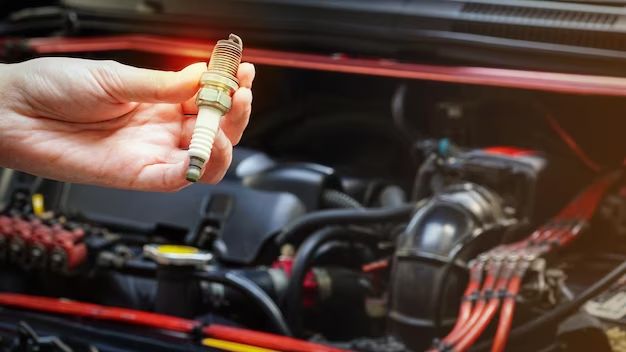Properly connecting spark plug wires is crucial for an engine to run smoothly. The spark plug wire delivers thousands of volts from the ignition coil to the spark plug, which then ignites the fuel mixture in the engine’s cylinders. Connecting the wires incorrectly can lead to a rough running engine, misfires, or even prevent the engine from starting.
Page Contents
How do spark plug wires work?
Spark plug wires connect the ignition coil to the spark plugs. The ignition coil produces a high voltage electrical signal that travels through the spark plug wires to the spark plugs, where it jumps the gap at the tip of the plug, creating the spark that ignites the air/fuel mixture.
The ignition coil has a primary winding and a secondary winding. When the current in the primary winding is interrupted by the opening and closing of the points in the distributor, it induces a high voltage in the thousands of volts in the secondary winding. This high voltage travels through the spark plug wire to the spark plug.
Spark plug wire routing
Spark plug wires must follow the correct firing order of the engine. The firing order is the sequence in which the spark plugs fire. This is determined by the manufacturer and follows the order in which the cylinders fire during the engine’s intake and exhaust strokes. The proper firing order is essential for the engine to run smoothly.
On most 4-cylinder engines, the firing order is 1-3-4-2. This means cylinder #1 fires first, followed by cylinder #3, then #4, and finally #2. A 6-cylinder engine may have a firing order of 1-5-3-6-2-4. An 8-cylinder engine could have a firing order of 1-8-4-3-6-5-7-2.
The spark plug wires must be routed from the distributor cap or ignition coil pack to the corresponding cylinders following the firing order. The distributor cap has terminals marked with the cylinder numbers to simplify the wiring.
Which end of the spark plug wire connects where?
Spark plug wires have a boot at each end that connects to the ignition system and the spark plug. The ignition coil or distributor cap end of the wire has a thicker boot that pushes onto the terminal. The spark plug end has a smaller boot that connects onto the top of the spark plug.
The wire coming from the positive (+) terminal of the ignition coil or distributor cap connects to the center electrode of the spark plug. The negative (-) terminal wire connects to the side ground electrode of the spark plug.
It is important to note that on most modern engines with a distributorless ignition system (coil packs), the spark plug wires do not differentiate between positive and negative. Either wire can connect to either spark plug terminal in most applications.
Tips for connecting spark plug wires
- Always follow the manufacturer’s firing order for the specific engine.
- Inspect wires for cracks, damage, and corrosion. Replace any defective wires.
- Push wire boots firmly over the distributor cap terminals and spark plugs until they click and lock into place.
- Do not overtighten boot clamps or use pliers which can damage the wire boots.
- Use dielectric grease inside the spark plug boots to help the boots slide onto the plugs and terminals.
- Ensure wires have proper clearance from hot or moving engine components to prevent damage.
What happens if spark plug wires are connected wrong?
Connecting spark plug wires incorrectly can have serious consequences for engine performance:
- The engine may not start at all if the wires are completely crossed.
- It will run very rough or misfire if the firing order is incorrect.
- Power output will be reduced due to weak sparks or misfires.
- Fuel efficiency suffers from incomplete combustion.
- The catalytic converter can be damaged from unburned fuel.
- Excessive vibration can occur from cylinders misfiring.
The check engine light may illuminate with codes related to cylinder misfires. It’s important to double check the routing of the spark plug wires if the engine is not running properly after maintenance.
Conclusion
Proper spark plug wire routing is critical for smooth engine operation and performance. Always follow the manufacturer’s firing order and connect the ignition coil or distributor cap terminals to the correct spark plugs. Use care when installing the wire boots to prevent damage. Inspect wires periodically and replace any that appear cracked or worn. Taking the time to correctly connect the spark plug wires makes a big difference in how well the engine runs.
